wrestling / Columns
Going Broadway 05.22.12 El Santo’s Mexican Wrestling Revolution And The Birth of Lucha Libre
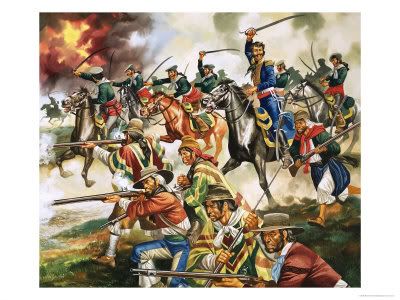
All great revolutions in history are spawned from the grip of a tyrannical leader, who seems to find never ending coffers of power to take from. Such was the case in Mexico during the last quarter of the 19th century and the early part of the 20th.
From 1876-1910, Porfirio Diaz was, for the most part, the undisputed figurehead and leader of Mexico. (With the exception of Manuel Gonzalez who ruled from 1880-1884 but was pretty much under the control of Diaz, who was re-elected in 1884 and stayed in power.) What started out as a government that was liberal and socially aware quickly became a dictatorship on the behalf of Diaz, and the lower class was the group that felt the brunt of this consolidation of power, the victims of his absolute greed and oppression.
The overwhelming statistic that sums up the era is that 95% of the land in Mexico was owned by only 5% of the Mexican population. Debts accrued during one generation of a family that were not paid in full when that patriarch died were passed on to the children to have to bear throughout their lives.
After years of discontent, the feeling of revolution and rebellion began to permeate throughout the cities and provinces. The election of 1910 featured once again another fixed outcome (as many of the previous elections had been) with Diaz declaring a landslide victory over the heavily favored and heavily liked Francisco Madero (who Diaz actually jailed on election day).
This became the proverbial straw that broke the camel’s back grew into an uprising that took place on November 10, 1910 in Chihuahua, Mexico. The Mexican Revolution was born…
…
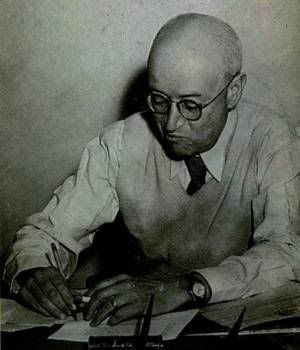
During the struggle to establish a democratic order in Mexico, many civilians became involved in the movement. In 1917, Salvador Lutteroth, of Colotlan, Jalisco, joined the army of General Obregon and served as a lieutenant as they battled the forces of Pancho Villa.
Three more bloody years of combat raged until the revolution to an end in 1920. Lutteroth, though, continued to serve in the military until after he was married in 1924. He then shifted his duties to being a property inspector for the Mexican Tax Department. In 1929, he was relocated by the Tax Department to Ciudad Juarez where he came across something something he had not been privy to before: professional wrestling.
Along with matches he witnessed in El Paso, Lutteroth was taken aback by not only the athleticism of the wrestlers but also their colorful personalities. Lutteroth had many ideas that began to run through his head. He envisioned bringing this same entertainment back to Mexico City, the heart of the Mexican people.
In 1933, he did just that as he created and backed the new Empresa Mexicana de Lucha Libre (EMLL). With the financials in order for the new company, Lutteroth had to battle the boxing promoters in the area to be able to have shows in the National Arena. After much frustration in being able to secure the storied venue, Lutteroth shifted his attention to the Modelo Arena. Although much smaller in size, this would become the home for his brand of professional wrestling.
It did not take long for the excitement and the word of mouth to spread about Lutteroth’s EMLL. The style of wrestling was very acrobatic, very aerial, and very visually appealing. Something more evolved from the classic American style of wrestling that revolved around power maneuvers. With crowds exceeding upwards of 5,000 per show, Lutteroth’s brain child was a success. But it was in 1934 that the signature element that would define lucha libre wrestling would appear in Mexico.
An American wrestler appeared at show donning a black leather mask under the handle of Maravilla Enmascarada (The Masked Marvel). This immediately caught the eye of Lutteroth, and he wondered if more wrestlers came out wearing a mask as well; becoming visually appointed heroes and villains that the audience could easily identify and relate to.
Lutteroth put his idea to work and thus a new crop of wrestling faces and heels were created. But it wasn’t until an eight man battle royal in 1942 that Lutteroth and the Mexican people would discover an icon.
…
During the 1920’s Jesus Guzman Campuzano and Josefina Huerta de Guzman moved their family of seven children to Mexico City seeking better opportunity. They settled into the village of Tepito, which became a popular haven for not only shoemakers, clothing makers, and open air market vendors but also to escape the Cristero War raging in cities such as Jalisco and Guanajuato. The massive influx of population into the small village caused overcrowding, creating one of the first slums in Mexico City.
Within this atmosphere of poverty and economic struggle, the fifth of Jesus and Josefina’s seven children, Rodolfo, already a talented athlete in baseball and football became engrossed in the growing popularity of Salvador Lutteroth’s lucha libre wrestling shows. By 1934 (or 1935 depending on the source), Rodolfo had joined the ranks the himself and throughout the 1930’s wrestled under many different handles including Rudy Guzman, El Hombre Rojo, and El Murcielago II (The Bat II. He actually had the use of this name blocked by the The Bat when he took legal action.)
Finally from a selection of wrestling handles provided by his manager, Rodolfo picked his definitive name to be used in the ring. In June of 1942, he entered an eight man battle royal wearing a silver mask and cape and bested the other seven competitors. As the last man standing and with massive approval from the crowd, Rodolfo Guzman Huerta was as much a name of the past as Weapon X was to Wolverine. From that day on, he would only be known as El Santo. The legend was born.
…
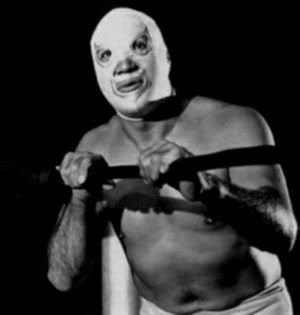
In professional wrestling, there sometimes just happens to be a perfect storm of events and circumstances that can come together to create a phenomenon; a wrestler who can transcend his status as a just a wrestler and reach levels of cultural admiration.
Although Santo (as he would be commonly referred) was originally a heel (or rudo), the fans cheered the loudest for him, instantly washing away the heel persona he was laden with and making him a full blown baby face. What was the allure of Santo? Others wore masks but what made him different?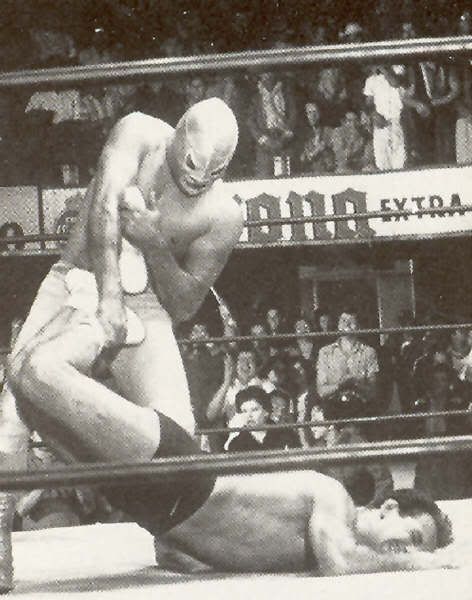
Once again, it falls back to the economic circumstance and the morale of the people not only in the Tepico slum but in other parts of Mexico City that seeing a hero like Santo (The Saint) battle and overcome the villains in the ring gave them a vicarious moment of triumph despite their real-life spot on the downside of advantage.
For three decades, Santo would be the mega face of Lutteroth’s EMLL as crowds not only in the arena but at home watching on television created an affirmed mainstream affinity for lucha libre wrestling throughout all of Mexico.
In luchas de apuestas (matches with wagers), Santo overwhelmingly won thirty five matches against opponents where either the loser would be unmasked or lose their hair. From what has been recorded, he never lost any of his luchas de apuestas.
In the 1980’s, Hulk Hogan’s popularity expanded from professional wrestling into mainstream media such as cartoons, endorsements, and even films. Three decades before the vitamin hawking Hulkster, Santo became a Mexican cultural icon appearing in many different forms of media.
In 1952, a comic book was created centered around Santo and his battles against various forms of evil, many times supernatural. Not only did he unseat the most popular literary character at the time in Mexico, Kaliban, but the comic ran for thirty seven years before ending in 1987.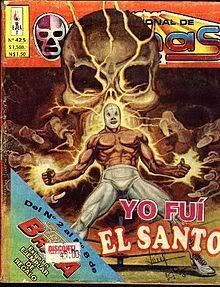
But not just comics. Santo was welcomed into the Mexican film industry, appearing in an astounding fifty two films while also continuing his wrestling career at the same time. To be honest, these were B movies at best and nearly identical in terms of story and structure with, once again, Santo having to overcome the forces of evil in the form of mad scientists, zombies, and even vampire women (to name a few). But the fact was, they were massively popular with Mexican audiences, causing more and more of these lucha libre films to be made.
After more than a quarter century of continued an untouched popularity not only in his sport but in his entire country, Santo entered the ring for the last time on September 12, 1982, one week shy of sixty five years old. The match ended up being an eight man tag match that Santo’s side came out victorious in, which allowed the legend to retire with one last win under his belt.
In Jaunary of 1984, he appeared on a Mexican television show called Contrpunto when he did the unthinkable and never before done in his entire career: he removed his mask. In a figurative sense, it was Rodolfo Guzman leaving Santo behind and giving the fans of Mexico the closure to the character they had embraced for so long. No lingering appearances or comebacks from retirement. A definitive end. A fitting end.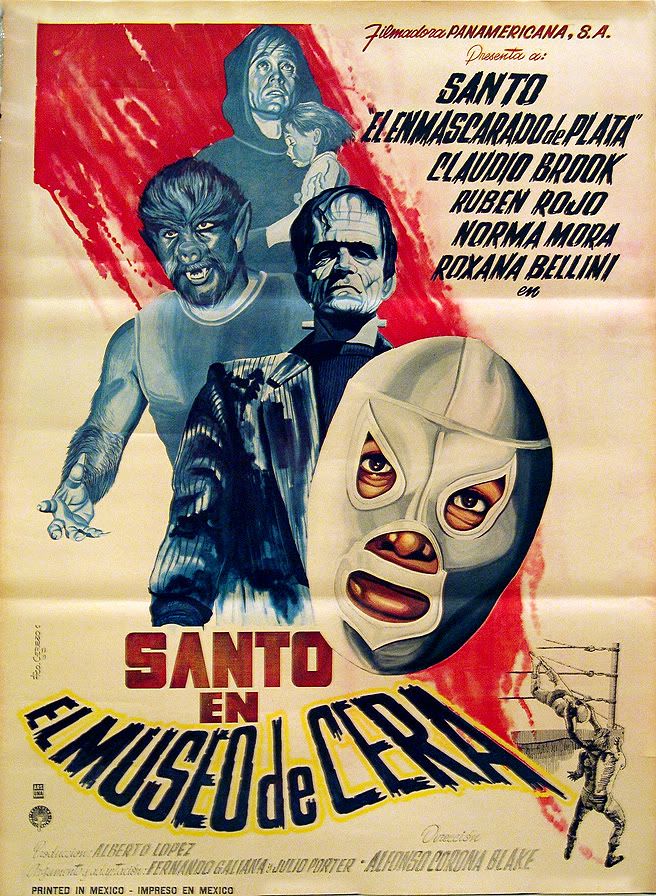
In an odd twist of irony, one week later, Rodolfo Guzman passed away on February 5, 1984. A heart attack claimed his life. At his request prior to his death, he was buried wearing his trademark silver mask. He was buried as Santo. The funeral was widely attended in Mexico, and he was lionized a hero in the form of statues erected throughout the country, most significantly in his birth place of Tulancingo.
Always and forever a hero to the people…
For Salvador Lutteroth, the end of his days as a promoter came in the mid fifties, but the beauty of his legacy is that it is still unfolding. Lucha libre is far from extinct in the wrestling community. Many promotions whether small and independent or large and international still adopt and display the lucha libre style, and even today is still giving birth to possibly the next stars of the business. But no matter where you end with lucha libre as a fan; whether you side with Eddie Guerrero or Rey Mysterio or even the “Chairman of WCW” La Parka, it always and forever comes back to the man in the silver mask and cape. A hero in the ring. A legend throughout a country.
More Trending Stories
- Liv Morgan, Natalya & More React To Rhea Ripley’s Injury & Vacating WWE Women’s Title
- Goldberg Won’t Comment On Vince McMahon Allegations: ‘It’s Not My Place’
- Will Ospreay Says He Will Retire Using the Storm Driver After AEW Dynasty
- Drew McIntyre Confirms Injury, Reveals Why He Didn’t Just Leave at WrestleMania 40







